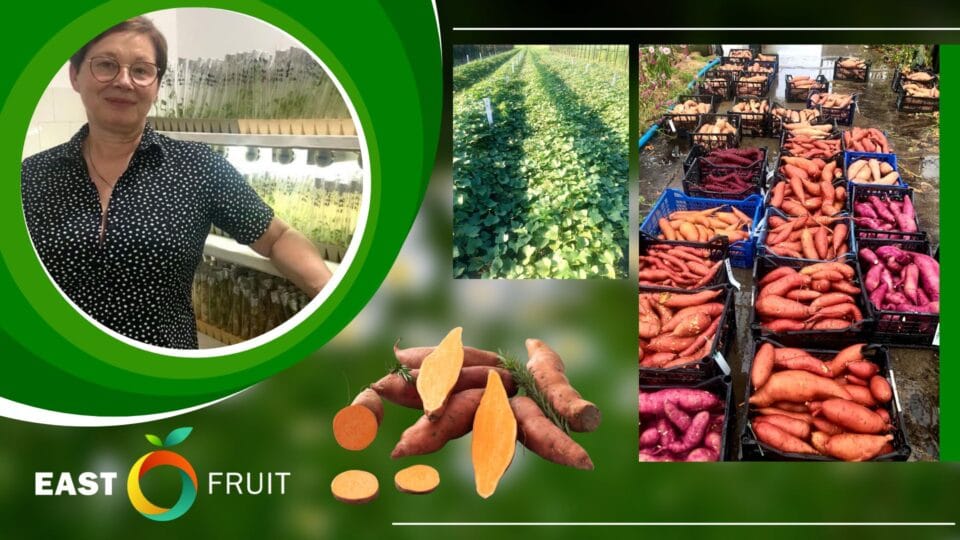Tetiana Ivchenko, Head of the Laboratory at the Institute of Vegetable and Melon Growing at the National Academy of Agrarian Sciences (NAAS) and Doctor of Agricultural Sciences, shares the advantages of cultivating sweet potato, its health benefits, and its high export potential. In her interview with EastFruit, she discusses her experience with this crop, which is gaining interest among Ukrainian farmers and holds the potential for diversifying production—even at large agricultural enterprises.
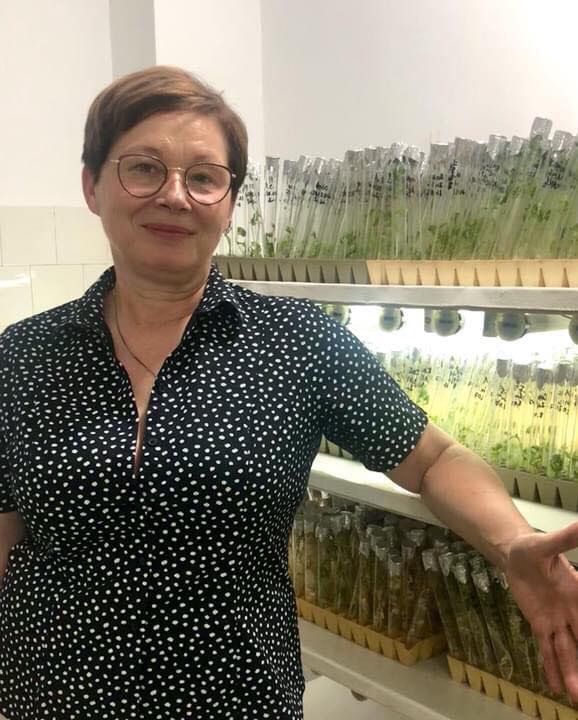
EastFruit: What motivated you to cultivate sweet potatoes in the Kharkiv region?
Global climate changes, both worldwide and specifically in Ukraine, are leading to reduced crop yields. Higher temperatures affect plant development and physiological processes, which ultimately impacts agricultural yields and crop quality. For this reason, expanding the range of vegetable crops by introducing new, non-traditional types is a crucial strategy for addressing the nation’s pressing issues—ensuring food, energy, and environmental security, as well as public health. Growing new crops like asparagus (Asparagus officinalis L.) and sweet potato (Ipomoea batatas L.) presents a promising path for both small-scale producers and agricultural holdings, providing products rich in biologically valuable components for high-margin domestic markets and potential exports.
EastFruit: What specific climate and soil factors did you consider when growing sweet potatoes in this region?
In Kharkiv region, the last two decades have seen a rise in the total active temperatures during the growing season (above 10°C). This has led to an earlier transition through 0°C in spring by 7–15 days, while in autumn, temperatures dip below 0°C later by 13–18 days. The warmth of the growing season has increased by an average of 70–100°C. The total active air temperature has risen from 2400°C to 2900°C, creating favorable conditions for cultivating a heat-loving crop like sweet potato.
EastFruit: How do you assess sweet potato yields compared to other regions in Ukraine?
Sweet potato yields in our region are somewhat lower than in southern Ukraine, where the climate is milder. However, even under these conditions, sweet potato remains a highly profitable crop, making it worthwhile to grow.
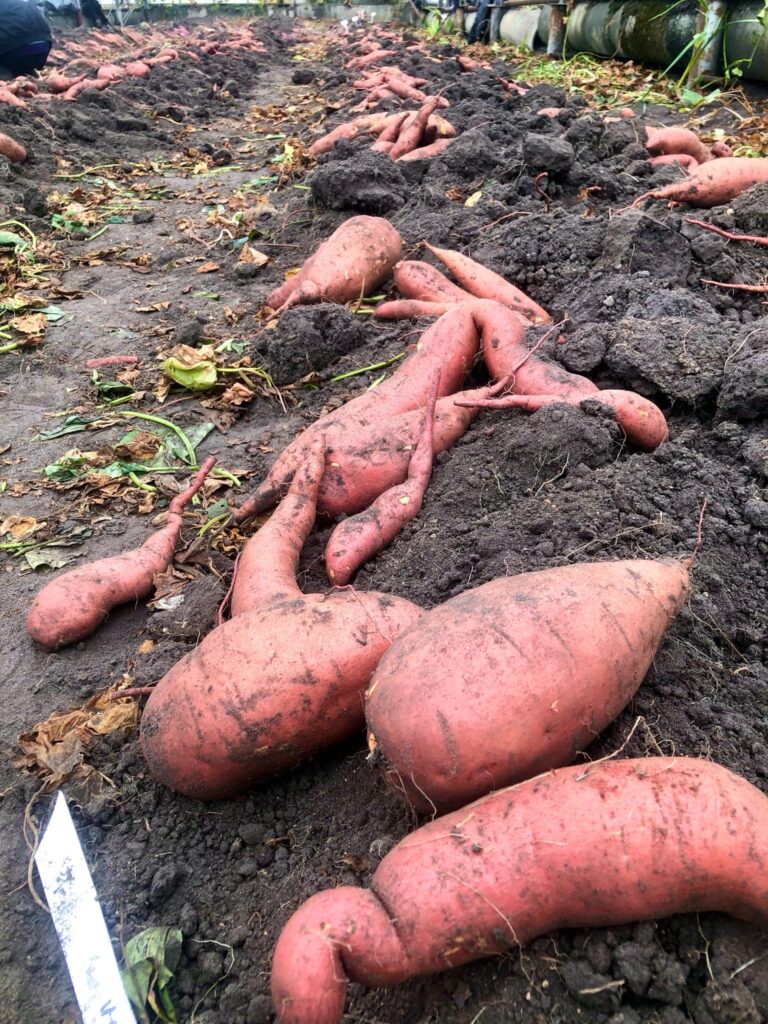 EastFruit: Which sweet potato varieties are most suitable for cultivation in the Slobozhanshchyna region?
EastFruit: Which sweet potato varieties are most suitable for cultivation in the Slobozhanshchyna region?
From our experience, the Admiral and Bonita varieties perform best, adapting well to local conditions and delivering consistently high yields.
EastFruit: Did you face any challenges during the initial stages of sweet potato cultivation?
Growing sweet potatoes, like any crop, has many nuances. In recent years at the Institute of Vegetable and Melon Growing at NAAS, we’ve studied important factors such as the patterns of yield formation with different fertilization systems (mineral, organic, and microbial complex treatments). We examined the impact of macro- and micronutrient deficiencies on sweet potato growth, built a database of visual deficiency signs, and developed scientifically validated techniques for cultivating sweet potatoes using raised beds and black polyethene mulch.
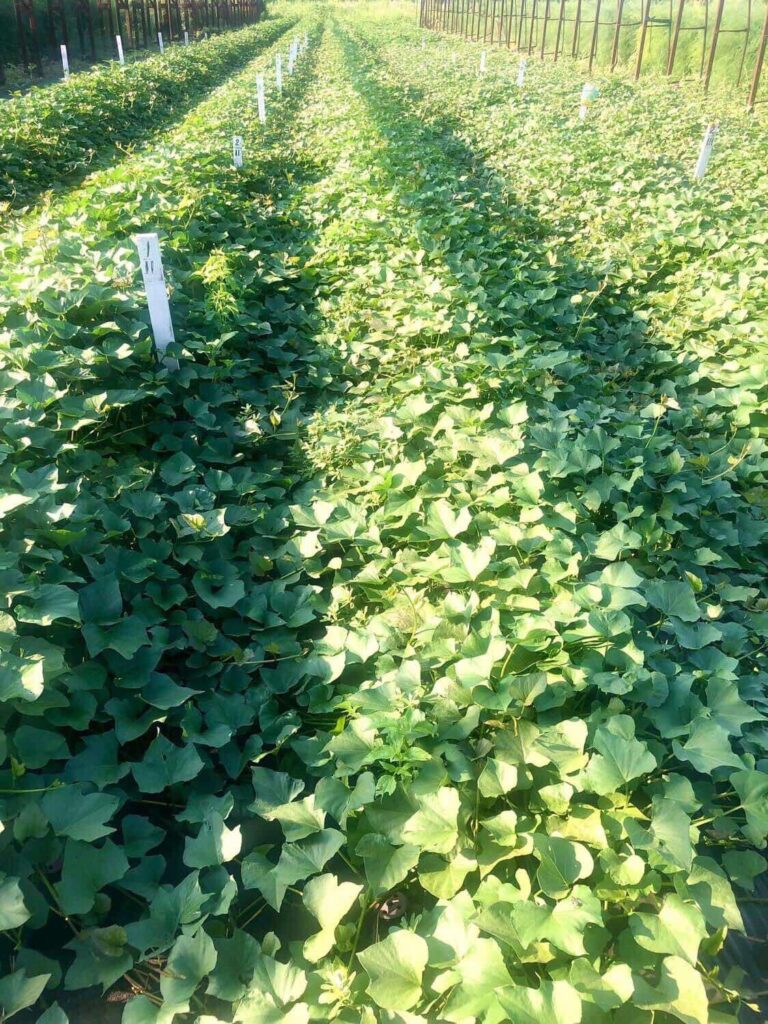 EastFruit: How do you manage the cultivation process throughout the growing season?
EastFruit: How do you manage the cultivation process throughout the growing season?
We actively use mulching in sweet potato cultivation, which helps manage plant care challenges.
EastFruit: Which agronomic techniques have proven most effective for increasing sweet potato yields?
Irrigation management is critical to growing sweet potatoes, as the crop requires adequate moisture throughout the growing season.
EastFruit: How has the Ukrainian market responded to sweet potato as a new product?
Demand for sweet potatoes is growing—they’re appreciated by both consumers and producers. Sweet potatoes have become popular in the food service industry and are now featured on many restaurant menus.
EastFruit: Do you plan to expand your sweet potato cultivation area?
Our goal is to produce high-quality planting material for this crop. Due to the full-scale military actions in our region, we haven’t increased our cultivation area, but the geographical spread of sweet potato cultivation, grown from our planting material, continues to grow annually.
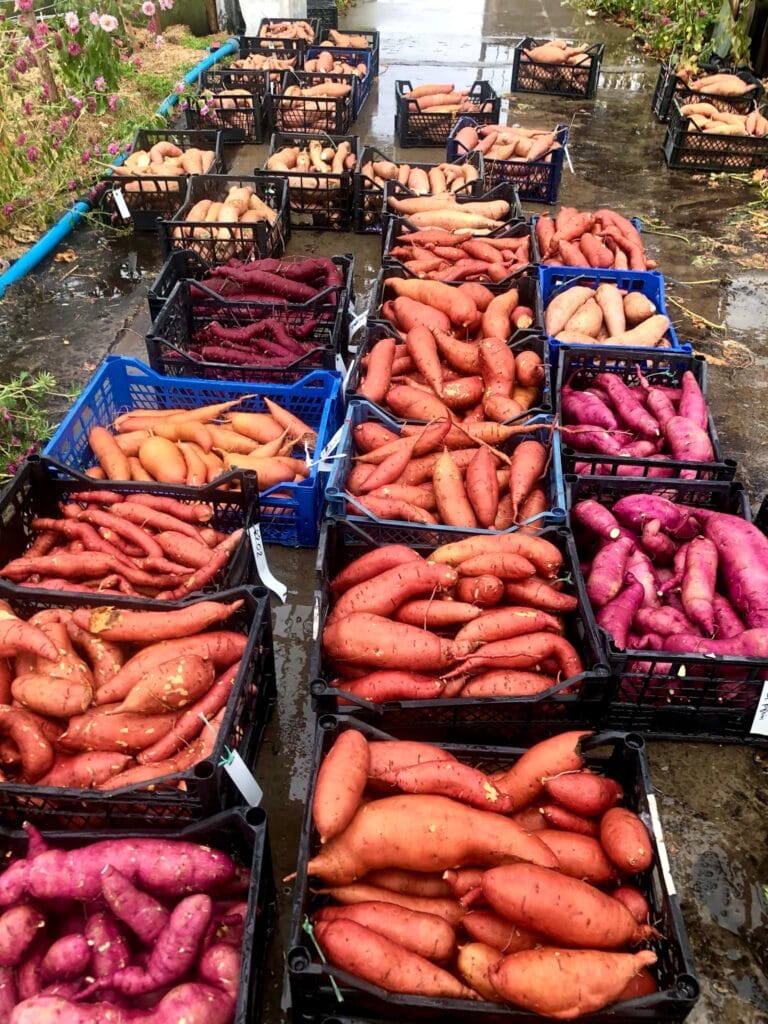 EastFruit: How do you organise the sale of the finished product?
EastFruit: How do you organise the sale of the finished product?
We actively use social media, maintain connections with the HoReCa sector, and collaborate with local markets and supermarkets. Our product is in high demand at restaurants, helping to popularize sweet potatoes among consumers.
EastFruit: Can you share any advice with farmers considering sweet potato cultivation?
We are ready to offer consultations on the technology for growing this crop, thanks to years of experience working with sweet potatoes. We also provide planting material.
EastFruit: How do you envision the future of sweet potato cultivation in Ukraine, considering current trends and market dynamics?
With a high content of biologically valuable components, sweet potatoes are a gourmet vegetable and are currently an exceptionally beneficial crop for supporting and restoring health in Ukraine, where public health has deteriorated due to the war. Additionally, sweet potato has one of the highest export potentials in Ukraine’s fruit and vegetable business for both fresh and processed markets.
The use of the site materials is free if there is a direct and open for search engines hyperlink to a specific publication of the East-Fruit.com website.




